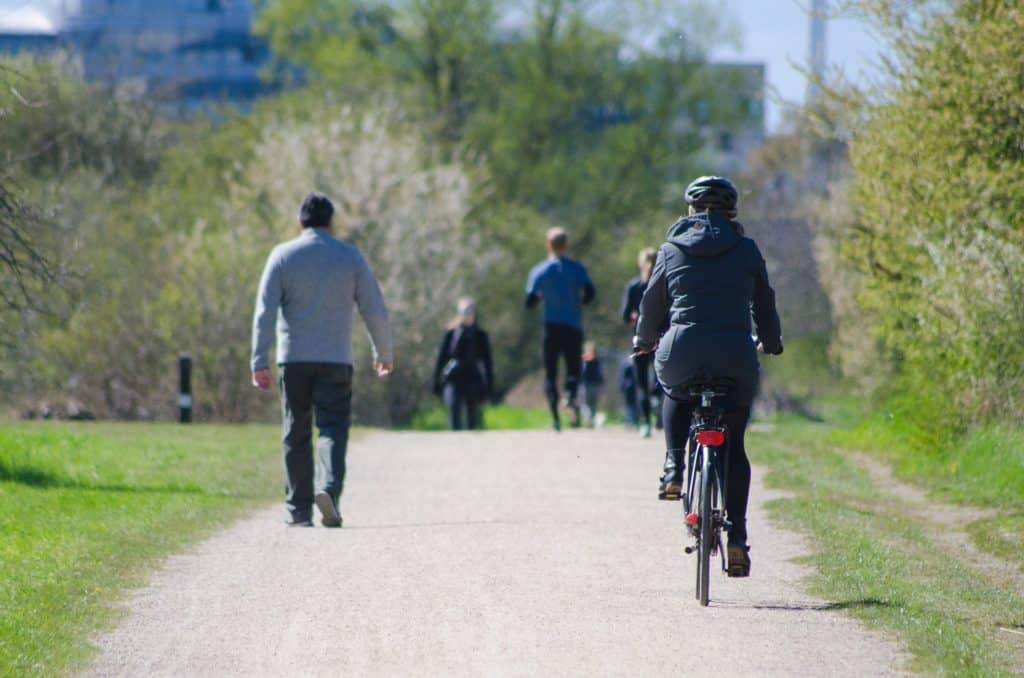Ready your body for exercise, the right way
 By Michael Gonzalez
By Michael Gonzalez
As springtime quickly approaches, the influx of people hitting the gym to appease New Year’s resolutions has dissipated and beach bodies are now on the minds of Long Islanders.
But before you begin, make sure your body is ready. The strongest intentions can go awry if you’re unprepared and attempt to accelerate from 0 to 100, jumping into strenuous activity after being idle for a long period.
Drastic changes won’t stick long-term. It’s unpractical. Instead, you need to make slow, incremental adjustments to achieve your goals, which are crucial to all levels of fitness. Whether you are pursuing a new you, focused on cardiovascular health or starting to get ready for the beach this summer (it’s never too early), follow these suggestions.
Define your goals and strategize
If you don’t have a goal, what are you working toward? It’s the No. 1 thing you should do whether you want to lose weight or build muscle.
If you want to lose 20 pounds, find mini-goals that you can hit every week to get there. Without planning and structure you are likely to go off the rails.
Start slow
People usually try to do too much in the beginning. After two weeks, they feel good, then three or four weeks later they feel run down, increasing risk of injury because their body went through too much change in a short timeframe.
If you are sedentary, focus on your weight. Target exercise and do at least 30 minutes at an elevated heart rate where you break some kind of sweat. It won’t matter what you do if you don’t move.
Getting active doesn’t have to be in a gym. Recreational sports and bike rides on weekends are great ways to keep you going. A peak workout pushes your heart rate to 85 to 90 percent. You can determine what heart rate is best for you by subtracting your age from 220. That should be your ideal workout rate.
 For those on medication to control hypertension and cholesterol, you have to gradually build up to the optimal workout. Take tiny intervals in getting there. Place yourself in an exercised heart rate zone for 30 to 45 seconds at a time and give yourself a larger recovery interval. Your body will always tell you what you can tolerate. Otherwise you will get dizzy, faint, flush and wobbly.
For those on medication to control hypertension and cholesterol, you have to gradually build up to the optimal workout. Take tiny intervals in getting there. Place yourself in an exercised heart rate zone for 30 to 45 seconds at a time and give yourself a larger recovery interval. Your body will always tell you what you can tolerate. Otherwise you will get dizzy, faint, flush and wobbly.
Stop immediately if you experience any of these symptoms.
Focus on diet
Once you find your flow, focus on your diet, but be realistic. The top pitfall when it comes to losing weight or even building muscle is people go online and find strict diets where they can’t eat carbohydrates or they starve themselves.
Avoid dropping your calorie intake so low that your entire metabolism slows down. You need to maintain homeostasis and every day functions—your brain and body don’t care what you look like.
Most importantly, don’t restrict yourself. While working out at a high level, your body is flying through carbohydrates. You need to replenish that energy. But if you’re someone who can’t get to that high level and hovering around 65 to 70 percent, you don’t need to eat a ton of carbs.
Be self-aware of how active you are, then tailor your diet to your body’s needs.
Have patience
We live in a society where people want things instantly, but our bodies don’t work that way. It takes time. Be patient with the process. Again, don’t try to do too much at one time.
Managing expectations is very important. You have to be realistic to maintain focus.
When you’re training for a goal, find someone who is in the athletic training profession or someone who is knowledgeable about achieving optimal health. They can be a great resource for advice and encouragement.

Michael Gonzalez, ATC, is senior athletic trainer for Northwell Health’s Sports Medicine program. He’s also the head athletic trainer at North Shore High School. Call 833-9-SPORTS to schedule an appointment with one of Northwell’s orthopedic specialists. For more health and wellness insights, visit northwell.edu/SportsInsights.



























